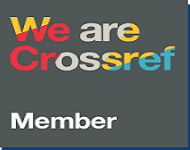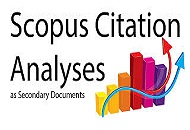Analisis Pengaruh Pembelajaran Hibrida Terhadap Motivasi Belajar Siswa SMA pada Masa Pertemuan Tatap Muka Terbatas (PTMT)
DOI:
https://doi.org/10.33394/jp.v10i1.6079Keywords:
Hybrid Learning, Learning Motivation, Face-to-Face, Learning Duration.Abstract
This study aims to analyze the effect of hybrid learning on the level of preference for face-to-face learning and learning motivation. This research method used a quantitative approach. The research instrument used a questionnaire distributed to 364 high school students in 2022, and the data were analyzed using the Partial Least Square method. Based on the study results, shorter learning duration was related to learning motivation. Students who prefer short learning durations had higher learning motivation. The use of digital technology did not affect learning motivation, and the preference for face-to-face learning was related to learning motivation.
References
Ali, W., & Kaur, M. (2020). Mediating educational challenges amidst COVID-19 pandemic. Asia Pacific Journal of Contemporary Education and Communication Technology. 6(2), 40-57.
Alnajdi, S.M. (2014). Hybrid learning in higher education. Society for Information Technology & Teacher Education International Conference. 214-220.
Andriani, W., Subandowo, M., Karyono, H., & Gunawan, W. (2021). Learning loss dalam pembelajaran daring di masa pandemi corona. Seminar Nasional Teknologi Pembelajaran. 1(1), 484-501.
Barbara, S., Wagner, P., Reimann, R., & Christiane, S. (2008). Vienna e-lecturing (VEL): Learning how to learn self-regulated in an internet-based blended learning setting. International Journal on ELearning; Norfolk, 7(4), 703–723.
Bibi, S., & Jati, H. (2015). Efektivitas model blended learning terhadap motivasi dan tingkat pemahaman mahasiswa mata kuliah algoritma dan pemrograman. Jurnal Pendidikan Vokasi, 5(1), 74–87.
Creswell, J.W. (2012). Educational research. Pearson Education, Inc.
Deci, E. L., Koestner, R., & Ryan, R. M. (1999). A meta-analytic review of experiments examining the effects of extrinsic rewards on intrinsic motivation. Psychological Bulletin, 125(6), 627–668. https://doi.org/10.1037/0033-2909.125.6.627
Engzell, P., Frey, A., & Verhagen, M. D. (2021). Learning loss due to school closures during the COVID-19 pandemic. Proceedings of the National Academy of Sciences of the United States of America, 118(17), e2022376118. https://doi.org/10.1073/pnas.2022376118
Ginns, P., & Ellis, R. (2007). Quality in blended learning: Exploring the relationships between on-line and face-to-face teaching and learning. The Internet and Higher Education. 10(1), 53-64.
Gustiani, S. (2020). Students’ motivation in online learning during COVID-19 pandemic era: a case study. Holistics Journal. 12(2), 23-40.
Gutman, L. M., & McLoyd, V. C. (2000). Parents’ management of their children’s education within the home, at school, and in the community: An examination of African-American families living in poverty. The Urban Review, 32(1), 1–24. https://doi.org/10.1023/a:1005112300726
Ilomäki, L., Lakkala, M. (2018). Digital technology and practices for school improvement: innovative digital school model. Research and Practice in Technology Enhanced Learning. 13(25), 1-32.
Islam, S., Baharun, H., Muali., Ghufron, M.I., Bali, M.I., Wijaya, M., & Marzuki, I. (2018). To boost students' motivation and achievement through blended learning. Journal of Physics: Conference Series. doi :10.1088/1742-6596/1114/1/012046
Hair, Jr, J. F., Hult, G.T.M., Ringle, C.M., & Sarstedt, M. (2013). A primier on partial least squares structural equation modelling(PLS - SEM) (2nd ed.). Sage Publications, Inc.
Kementerian Pendidikan dan Kebudayaan, Riset dan Teknologi. (2022). Surat edaran menteri pendidikan dan kebudayaan, riset dan teknologi nomor 2 tahun 2022 tentang diskresi pelaksanaan keputusan bersama empat menteri tentang panduan penyelenggaraan pembelajaran di masa pandemi COVID-19.
Kementerian Pendidikan dan Kebudayaan, Riset dan Teknologi. (2020). Surat edaran nomor 4 tahun 2020 tentang pelaksanaan pendidikan dalam masa darurat penyebaran COVID-19. https://pk.kemdikbud.go.id/read-news/surat-edaran-nomor-4-tahun-2020-tentang-pelaksanaan-pendidikan-dalam-masa-darurat-penyebaran-covid19
Lamas, H. (2015). School performance. Propósitos y Representaciones, 3(1), 313-386.
Legault L. (2017). Self-Determination Theory. In: Zeigler-Hill V., Shackelford T. (eds) Encyclopedia of Personality and Individual Differences. Springer, Cham. https://doi.org/10.1007/978-3-319-28099-8_1162-1
Legault L. (2016). Intrinsic and Extrinsic Motivation. In: Zeigler-Hill V., Shackelford T. (eds) Encyclopedia of Personality and Individual Differences. Springer, Cham.
Mohamed, Z.B. (2006). Managing student learning time for effective learning. First National Conference on Technical Education. https://www.researchgate.net/publication/311587414_MANAGING_STUDENT_LEARNING_TIME_FOR_EFFECTIVE_LEARNING
Moore, M. G. (2018). The theory of transactional distance. Routledge.
Namood-e-Sahar. (2020). COVID-19 pandemic and hybrid learning system. Education Conference 2020 Empower Teaching. 201-206.
Nunan, D., & Bailey, K. (2009). Exploring second language classroom research. Cengage Learning.
Pirker, J., Riffnaller-Schiefer, M., Tomes, L. M., & Gütl, C. (2016). Motivational Active Learning in Blended and Virtual Learning Scenarios: Engaging Students in Digital Learning. In M. Pinheiro, & D. Simões (Ed.), Handbook of Research on Engaging Digital Natives in Higher Education Settings (pp. 416-437). IGI Global.
Priess-Buchheit, J. (2020). Synchronous hybrid learning in times of social distancing:A report and case study on benefits, trainer’s challenges, and guidelines. International Journal for Innovation Education and Research. 8(10), 356-364.
Rorimpandey, W.H.F., & Midun, H. (2021). Effect of hybrid learning strategy and self-efficacy on learning outcomes. Journal of Hunan University. 48(8), 181-188.
Ryan, R.M., & Deci, E.L. (2000). Self-determination theory and the facilitation of intrinsic motivation, social development, and well-being. The American psychologist, 55 1, 68-78.
Singh, A. (2021). Significance of research process in research work.
Slameto. (2010). Belajar dan faktor-faktor yang mempengaruhinya. Rineka Cipta.
Sugiyono, S. (2007). Statistika untuk penelitian. Alfabeta.
UNESCO International Bureau of Education. (2016). Learning time. http://www.ibe.unesco.org/en/glossary-curriculum-terminology/l/learning-time
Downloads
Published
How to Cite
Issue
Section
Citation Check
License
License and Publishing Agreement
In submitting the manuscript to the journal, the authors certify that:
- They are authorized by their co-authors to enter into these arrangements.
- The work described has not been formally published before, except in the form of an abstract or as part of a published lecture, review, thesis, or overlay journal.
- That it is not under consideration for publication elsewhere,
- That its publication has been approved by all the author(s) and by the responsible authorities tacitly or explicitly of the institutes where the work has been carried out.
- They secure the right to reproduce any material that has already been published or copyrighted elsewhere.
- They agree to the following license and publishing agreement.
Copyright
Authors who publish with Jurnal Paedagogy agree to the following terms:
- Authors retain copyright and grant the journal right of first publication with the work simultaneously licensed under a Creative Commons Attribution License (CC BY-SA 4.0) that allows others to share the work with an acknowledgment of the work's authorship and initial publication in this journal.
- Authors are able to enter into separate, additional contractual arrangements for the non-exclusive distribution of the journal's published version of the work (e.g., post it to an institutional repository or publish it in a book), with an acknowledgment of its initial publication in this journal.
- Authors are permitted and encouraged to post their work online (e.g., in institutional repositories or on their website) prior to and during the submission process, as it can lead to productive exchanges, as well as earlier and greater citation of published work.
Licensing for Data Publication
-
Open Data Commons Attribution License, http://www.opendatacommons.org/licenses/by/1.0/ (default)






